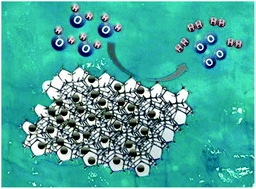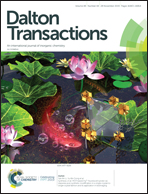An iron-doped cobalt phosphide nano-electrocatalyst derived from a metal–organic framework for efficient water splitting†
Abstract
The development of hydrogen energy relies to a large extent on the electrocatalysts that are highly efficient and widely sourced. Although transition metal phosphides (TMPs) have made great achievements in reducing the overpotential of hydrogen evolution reaction (HER), improving oxygen evolution reaction (OER) performance that is relatively lagging in view of relatively large overpotentials and high kinetics energy barriers is yet to be achieved. Herein, we propose an extremely convenient and practical approach to prepare iron-doped cobalt phosphide nanoparticles (Fe–CoxP NPs) via a one-step method by introducing an iron element in the in situ synthesis of a metal–organic framework (ZIF-67) and then subjecting to a phosphate treatment. The as-obtained Fe–CoxP showed an excellent OER and acceptable HER activities. In particular, for OER, the optimized Fe-doped CoxP (Fe0.27Co0.73P) exhibits an ultra-low overpotential of 251 mV at a current density of 10 mA cm−2, a negligible electrocatalytic degradation after 3000 CV cycles, and time over 40 h-reliant current density stability. When employed as cathode and anode electrodes in water splitting, the current density of 10 mA cm−2 can be achieved at a potential of 1.68 V. Our facile synthetic strategy and innovative ideas are undoubtedly beneficial to the design and construction of advanced water-splitting electrocatalysts.



 Please wait while we load your content...
Please wait while we load your content...